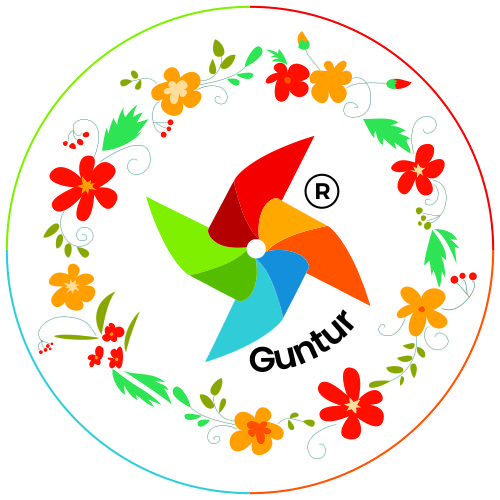



Successfully delivered 7Million+ Exclusive 1:1 Multi-Sensory, Multi-Disciplinary, Integrated, Autism Therapy, Speech Therapy, ABA Therapy, Occupational Therapy, CBT Therapy Services with measured 97% proven improvement rate, Empowering Kids, People with autism, sensorial conditions from 40 countries to be Self-Sufficient, to be part of mainstream society, to have wonderful life plausible, to wipe-off tears from their families, to bring smiles into their families. Call 9100 181 181 for your kids wonderful future today.
Pinnacle Blooms Network - India's Best Autism Therapy Centers Network with 1,600+ Multi-Sensory, Multi-Disciplinary, Integrated, Fulltime, Permanent, Autism Therapy Experts working across 100+ Pinnacle Centers PAN India, Delhi to Visakhapatnam, soul purpose of existence is: enriching 90+ crore kids, people, parents, families suffering from autism, sensorial conditions with effective skills & intervention strategies for overall development of the children through hand crafted programs by industry experts leading to overall development of the child thus happy families.
💡🚀 Hello Super Moms! Pinnacle welcoming you to the AI Revolution! 🚀💡
Welcome to Pinnacle Blooms Network, where we're reshaping the future of Autism Therapy. As the world's leading AI-Driven Autism Therapy Network, we're not just offering therapy, we're unlocking a world of opportunities for your child. 🌐🏆
🧠Pinancle AI technology 🤖 only of its kind in the world🥇, is a game-changer. Here's why:
1️⃣ Early Identification: We spot autism signs early, leading to quicker intervention and more effective results. 🕵️♀️🔍
2️⃣ Personalized Therapy: Every child is unique, and our AI helps us craft therapy plans tailored to your child's needs, leading to happier children and higher success rates! 🧩👩🔬🌈🎈
3️⃣ Continual Learning: Our AI evolves with your child, adjusting therapy as they progress, ensuring constant growth and effectiveness. 🎓🚀
4️⃣ Data-Driven Decisions: We're not guessing - we're predicting. Our AI helps make informed decisions based on patterns, trends, and analytics, leading to better strategies and successful outcomes. 📊💡
5️⃣ Efficiency & Accessibility: AI reduces time for assessments and feedback and breaks geographical barriers, allowing us to offer world-class therapy services worldwide. 🌍⏱
With a mission to empower 90+ crore kids, parents, and families affected by autism and sensorial conditions, we've successfully delivered 7 Million+ 1:1 Exclusive Multi-Sensory, Multi-Disciplinary, Integrated Autism, Speech, Occupational, ABA, Special Education Therapy Services achieving an impressive 97%+ success rate! 🏅
Here's the good news! You, too, can be a part of our success story. By embracing Pinnacle's AI-driven approach, you're not only investing in your child's future but also contributing to a global initiative recognized for transforming lives. Every new member strengthens our mission, helps us reach more families, and takes us a step closer to a world where every child, irrespective of their condition, can thrive. 💖
Are you ready to join us? Dial 📞 9100181181 and let our Pinnacle National Autism Helpline guide you on this journey. Together, let's turn challenges into opportunities and open a world of possibilities for your child. 🤝🌟
Remember, at Pinnacle, you're not alone. You're becoming part of a global community of brave, steadfast, super moms, all committed to their children's success. Let's transform lives, one child at a time. Because at Pinnacle, we don't just care - we change lives! 🌐💖
































































Pinnacle Blooms Network unit of Bharath Healthcare Laboratories Pvt. Ltd. - World's #1 Autism Therapy Centers Network Successfully Delivered 6.3Million+ Exclusive 1:1 Therapy Services with 97%+ Measured Proven Improvement Rate.
Core purposed to be empowering 900 Million+ Kids, Parents, Families suffering from sensorial conditions such as Autism, ADHD, Speech, Occupational, ABA, Special Education Needs.. to be Self-Sufficient, to be part of Mainstream Society, to have Wonderful Life Plausible, to Bring Smiles into their Families.
By 1,600+ Fulltime, Permanent, Certified, Qualified, Proven, Multi-Sensory, Multi-Disciplinary, Integrated Autism Therapy Experts empowering kids across 100+ Pinnacle Blooms Network Centers Spread PAN India, Abroad.
Innovated, Built and Lead by Mothers for Kids, Parents, Families, Employed 70%+ Fe-Male Co-Workers, Pinnacle Blooms Network unit of Bharath Healthcare Laboratories Pvt. Ltd. is the world's #1 Safe Secure Autism Therapy Centes Network for your kid, you, your family.
Empowered 6.3Million+ Kids, Parents, Families from 41+ countries of our wonderful world by far and counting. Best Speech Therapy Center, Best Occupational Therapy Center, Best ABA Therapy Center, Best Special Education Center near. Call 9100 181 181 for your kids wonderful self-sufficient, part of mainstream life, 24x7, 365 days, 18+ Regional, National, International Languages.
Disclaimer: The information on this site is not intended or implied to be a substitute for professional medical advice, diagnosis or treatment. All content, including text, graphics, images and information, contained on or available through this website is for general information purposes only.
